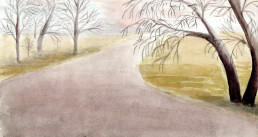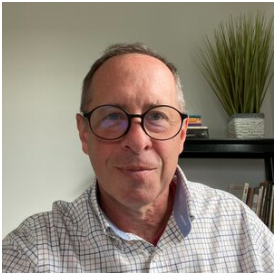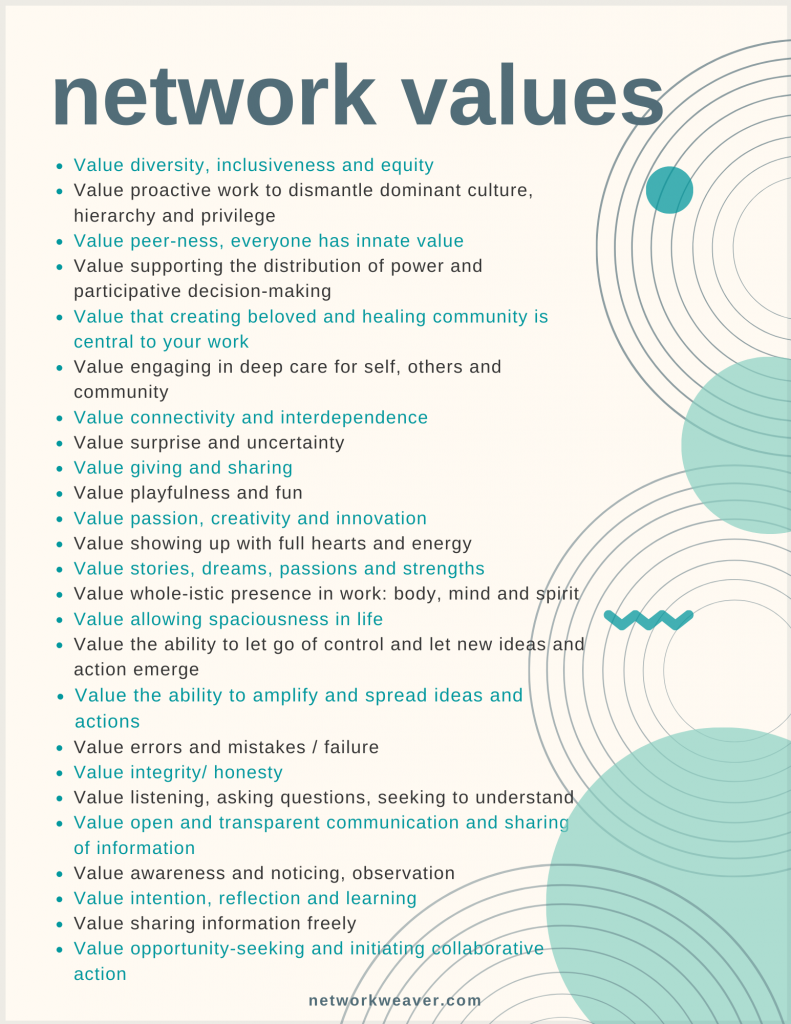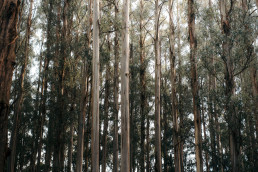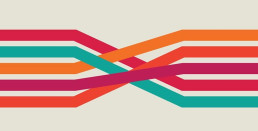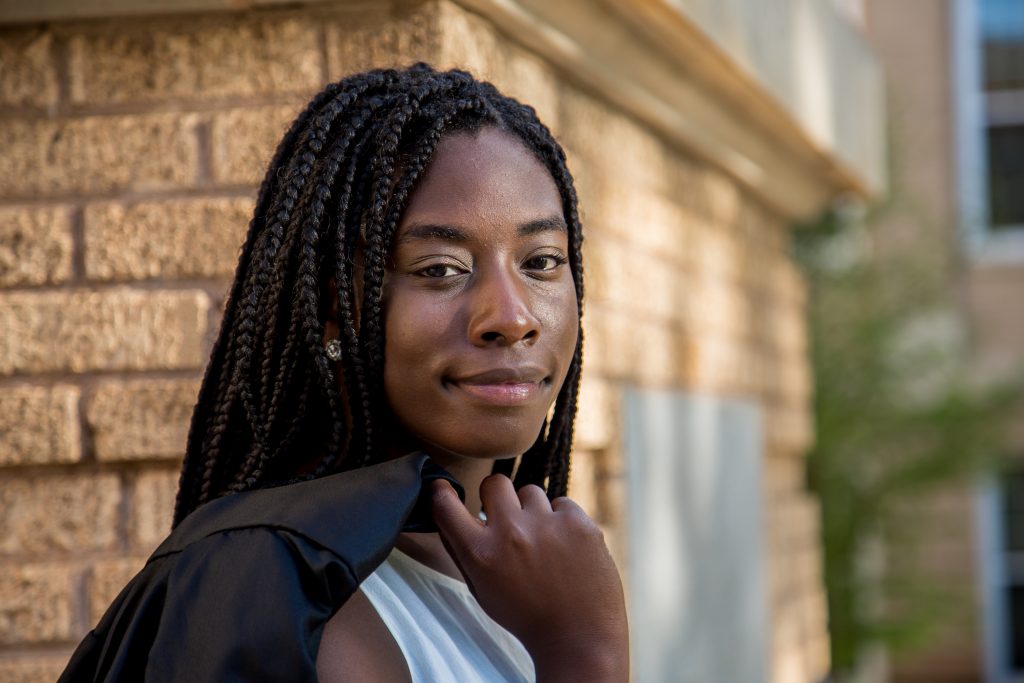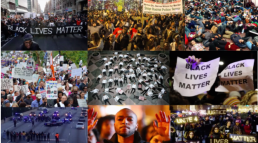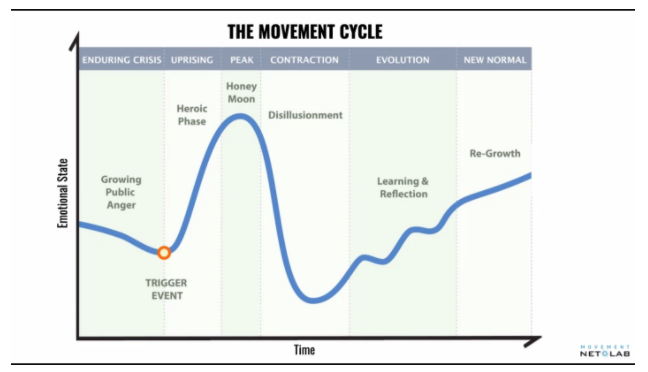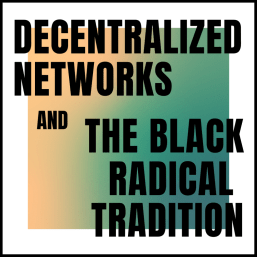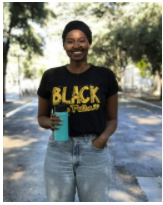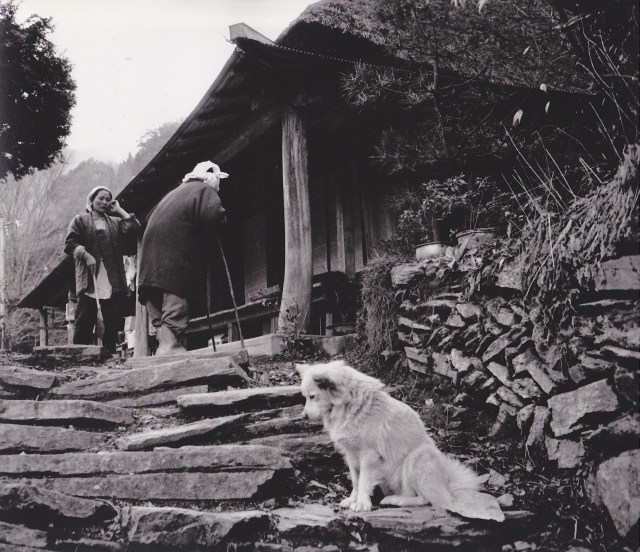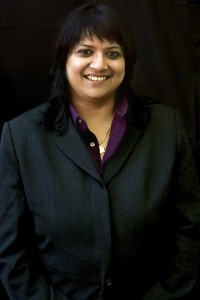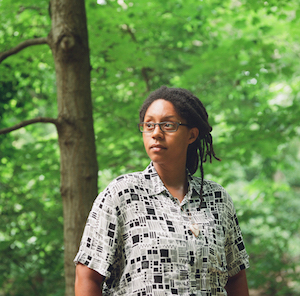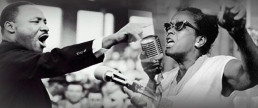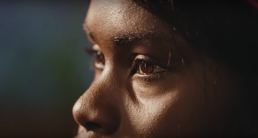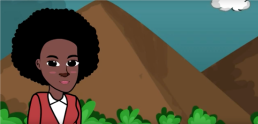Pathways of Change
An individual approach
Our journey begins with the individual person who has unique experiences, thoughts, and feelings. This uniqueness may sound obvious, but we sometimes take it for granted.
It’s easy to put people into categories when we’re pressed for time or have too many things going on. In a similar way, it’s easy to associate our actions and appearance with the ideals that we grew up with, learned in school, or see in commercials.
Because we’re starting from the individual person, this approach doesn't employ categories or ideals which ignore the intrinsic uniqueness of individuals.
Enhances social change efforts
This vision complements and enhances efforts of social change. The focus on the individual extends the reach of social change.
While social change efforts address issues at the group and systems level, this vision focuses on the unique individual — where issues originate. The combination of groups and individuals provides a more holistic approach to addressing the social problems we experience today.
Social change through what we already know
At one level this vision is a shift of mindsets. It’s a new way of looking at ourselves and a new paradigm of how we interact within ourselves and the world around us.
At another level this vision simply reminds us of what we already know. It’s realizing that we are already at the place we want to be. We just have to act upon it.
This movement of reminding and realizing is small, yet it lays a foundation of social change.
Dissolves the source of racism and discrimination
Seeing our own unique selves helps us understand that categories and ideals don’t apply to humans.
This leads to social change because we no longer categorize individuals or idealize them. It dissolves the source of problems like racism and discrimination before those problems start.
Reduces the source of prejudice and hate crimes
When we realize that our authentic knowledge comes from within us, we understand that others have their own authentic knowledge. Each of us makes lasagna and mixes paints in our own unique way based on our own authentic knowledge.
Our uniqueness extends to our everyday lives. The way we live is different for each one of us, in part because of our own authentic knowledge.
This leads to social change because we no longer expect people to live the same way we do. It reduces problems like prejudice and hate crimes before those problems begin.
Lessens the source of gender and racial inequalities
When we understand that each of us is different, and act on that understanding, then we realize that each person’s way of living is different. Accepting our differences moves us toward treating each other with more respect and kindness.
This leads to social change because we no longer expect people to live the same way we do. It lessens the source of problems like gender and racial inequalities before those problems start.
Shifting toward practice is meaningful
Shifting the vision toward practice is more than an intriguing exercise. This practice has meaning for each one of us.
Let’s be smart about this shift toward practice.
The hardest part of any journey is the first step. Taking small steps can be simple and easy.
Let’s be understanding about this shift toward practice.
We can imagine this practice in different contexts, but it should fit within the space of efforts, projects, and people.
Let’s be empathic about this shift toward practice.
We should be empathic not just to the person next to us, but also to our own selves. We should remind ourselves that we’re not only here to help others in a chaotic world. We should remind ourselves that we’re also here to help the person inside of us. The person who seeks a world where all individuals are unique and valued, in a life that is important and meaningful.
Russell Suereth founded Pathways of Change to promote a social shift where each person's uniqueness is respected and our daily lives are important and meaningful. His focus is how we can create real and lasting change at the intersection of individual and systems transformation. Russell is the author of the McGraw-Hill book Developing Natural Language Interfaces, the lead inventor on two United States patents, the creator and producer of award-winning music, and podcast creator, producer, and host. He is currently in the Critical and Creative Thinking program at the University of Massachusetts in Boston.
Visit our website.
Visit us at Pathways of Change to find out more about our vision of social change, where each person is unique and our everyday lives are important and meaningful.
Contact us today.
To me the important question is, what do we want to create as individuals of social change? The author Robert Fritz has an interesting view of creativity and realizing our vision.
"The inventiveness of the creative process does not come from generating alternatives, but from generating a path from the original concept of what you want to create to the final creation of it in reality" (Fritz, 1984, pp. 38-39).
This path and the activity of realizing is what I want to share with you. Please contact me directly through email at russell@pathwaysofchange.org. I look forward to hearing from you.
Russell Suereth
References
Fritz, R. (1984). The Path of Least Resistance: Learning to Become the Creative Force in Your Own Life. Random House Publishing Group.
NETWORK VALUES
Having a group or network take a values survey raises awareness of the values and behaviors that enable networks to be system shifting or transformational.
Network Weaver has published a Network Values Module. Within this module are links to two web-based network values surveys, along with instructions. Also included are printable versions of the network values surveys and a printable flyer of a compiled list of Network Values.
Download the free module HERE
PURPOSE OF NETWORK VALUES SURVEYS
The purpose of having a group or network take a values survey is that it raises awareness of the values and behaviors that enable networks to be system shifting or transformational. It also gives clear information about the specific value areas where they need to work together to help each other shift to more network ways of being. People take the survey, immediately see the aggregated results, and work together to develop strategies for shifting challenge areas.
It’s extremely valuable for groups of networks to take the survey every six months (or even more often at first) so that they can see the progress they have made in shifting to network values and identify areas that still need attention.
There are two values surveys in this module.
- #1 Network Values Checklist
- #2 Network Values Dashboard (for individuals and organizations)
The first one is for individuals. It is used to help individuals identify the areas where they are already behaving from network values. You can have the group aggregate the results of everyone who took the survey so that they can see to what degree they as a group or network have shifted to network values and behaviors.
The second survey has two versions of each question. The first asks the individual about their values. The second asks the individual to rate how their organization ranks in reflecting this value or behavior. Usually the participants will score higher than their organizations. This survey helps people recognize that they cannot simply shift their own values, but need to work with their organizations to shift the entire organizational culture – if they want to be transformative in their impact.
Download the Networks Value Module HERE
SYSTEMS CHANGE & DEEP EQUITY
PATHWAYS TOWARD SUSTAINABLE
IMPACT, BEYOND “EUREKA!,”
UNAWARENESS & UNWITTING HARM
An Interview with Sheryl Petty and Mark Leach
Below is the introduction to the full Systems Change & Deep Equity monograph offered by Sheryl Petty of Movement Tapestries and Mark Leach of Change Elemental.
Available for download here at Network Weaver or directly from Change Elemental’s Website.
Change Elemental chose to offer a monograph to share our thoughts on the inseparability of Systems Change and Deep Equity, given our 40 years as an organization in the systems change, capacity building, and social justice fields. (1) We offer this especially given the proliferation of equity awareness and significantly deeper requests for equity support across the organizational development and movement network fields in the last few years. This expansion in requests for deep, transformational equity support has grown dramatically since the 2016 U.S. presidential election. Now, many more social change organizations and philanthropic institutions are working to deepen their knowledge and capacity around Systems Change and Deep Equity. In our opinion, the combination of these two fields is pivotal and likely the work to do for the next phase of our human evolution if we are to become the societies we hope for in our deepest hearts and visions for just and healthy communities.
The co-authors of this article have 65 years of combined experience in systems change, equity, and organizational transformation. We have worked together on a number of projects for nearly 8 years, sometimes separately and, at times, together in local, national, and international spaces. We have worked across foundations, non-profits, medium-to-large school systems and universities as well as with individuals, institutions, and networks to support leaders, change agents, and groups to deepen their capacity to realize the full potential of their missions and collective dreams. We have observed over the last decade or so in the field of organizational development, the more popular advent of “Systems Change” as a domain of effort that can lead to more comprehensive, lasting, and effective transformation for institutions, communities, neighborhoods, and groups.
Yet, our observation is also that these approaches to “complex systems” are new to some and not so new to others. Here enters “equity.” We have written elsewhere on the dimensions of equity, and refer readers to those pieces. (2) Others of our colleagues have also written extensively across the fields of social justice, organizational transformation, network development, and movement building. (3)
Our purpose in this article is to dispel mythology and to illuminate essential dimensions of approaches to Systems Change intimately connected with Deep Equity. Our perspectives and our experience have shown us that the two are inseparable if they are to be pursued at depth. The degree of healing needed in our world, and in our collective institutions and communities, requires nothing less than depth from us at this time (if less comprehensive approaches were ever appropriate).
We indicate in this monograph what, from our perspective, are the most salient aspects of approaches to Systems Change and Deep Equity combined that can lead and, in our experience, have led to the most profound changes in organizations, local, national, and global communities, networks, and movement building efforts. (We also refer readers to Change Elemental and Building Movement Project’s 2018 webinar on Systems Change and Equity for further grounding in our approaches. (4) )
As we have stated, nothing less than the robustness of complex Systems Change approaches are necessary to solve some of the most intractable situations we are and have been facing for quite some time—socially, environmentally, and economically, in terms of the overall health and well-being of individuals and communities, nationally and globally. We have grown as a species in our ability to be aware of the interconnectedness between so many of our issues and circumstances; this insight is a gift. We are now challenged to take that growth and insight, and apply it at depth with particular attention to our areas of unawareness—i.e., the places we have been ignoring for centuries. It is to these areas that Deep Equity speaks. In fact, Deep Equity, by its very nature, is complex Systems Change.
To put a finer point on these statements: Systems Change pursued without Deep Equity is, in our experience, dangerous and can cause harm, and in fact leaves some of the critical elements of systems unchanged. And “equity” pursued without “Systems Change” is not “deep” nor comprehensive at the level of effectiveness currently needed.
Both need each other. The challenge in effectively combining these domains of practice is that often many systems change actors—particularly those with access to publishing, funding, and other critical resources to achieve depth and scale—do not seem to understand nor are they embedding Deep Equity into their work. Or when “equity” is addressed, it is piecemeal, seems an afterthought, and/or is shallow. Actors pursuing and advancing critically needed systems change efforts often bring limited awareness to address or adequately embed equity. This is the wound we must heal.
We have observed too many times systems change efforts pursued to the neglect of equity, or Deep Equity, despite living in a period where information about equity (and Deep Equity, in particular) is proliferating at an unprecedented rate. Gone are the times when any of us could say, “I couldn’t find any information on it,” “I didn’t know anyone,” or “I didn’t know better.”
We owe it to ourselves and to each other to confront our old habits that are preventing us from creating the most robust, healing, catalytic, life-affirming, and transformative solutions we can develop, and that are desperately needed. Pursuing Deep Equity and Systems Change will require us to squarely address issues of power, privilege, places of unawareness, and the meaning of “depth” in approaches to equity and systems change. It will take bravery and courage, finding out how deep we are really willing to go to help heal and transform this world, committing to the depth that we discover in our exploration, and partnering and complementing each other in ways that may be heretofore unprecedented. (5) (We also refer the reader to a previously published piece from one of the authors on the relationship between these two themes plus “inner work:” “Waking Up To All of Ourselves: Inner Work, Social Justice & Systems Change.” (6) )
This monograph is structured as an interview of Sheryl Petty conducted by Mark Leach, but it is ultimately a dialogue between two long-term Systems Change and Equity actors.
One of us is a soon-to-be middle-aged cisgendered, (7) queer/pansexual, Black woman from Detroit, whose professional career in social justice and Systems Change began in Oakland, CA in educational systems and nonprofits, and branched out into capacity building and systems change with school systems, nonprofits, and philanthropic institutions around the country over the last 25 years. She also has a nearly 25-year inner work practice in African-based and Tibetan Buddhist traditions, in both of which she is ordained and teaches.
The other of us is a well-past middle-aged, cisgendered, white man from Long Island, New York. Based on early experiences in some of the world’s most economically poor countries, he has spent his life trying to understand who gets what, and why, and working with people, organizations, and networks across big differences in identity, wealth, and worldview to tackle big, messy problems of systemic inequity.
Systems Change & Deep Equity is available for download here at Network Weaver or directly from Change Elemental’s Website.
1. Change Elemental was formerly known as Management Assistance Group (MAG). We changed our name in April 2019.
2. For example: Petty, Sheryl. Seeing, Reckoning and Acting: A Practice Toward Deep Equity. Change Elemental, 2016. https://changeelemental.org/resources/seeing-reckoning-acting-a-practice-toward-deep-equity/ ; and Petty, Sheryl and Amy B. Dean. Pursuing Deep Equity. Nonprofit Quarterly, 2017. https://nonprofitquarterly.org/five-elements-of-a-thriving-justice-ecosystem-pursuing-deep-equity/
3. Please see more resources listed in the appendix.
4. Systems Change with an Equity Lens: Community Interventions that Shift Power and Center Race. Change Elemental and Building Movement Project, 2018. https://changeelemental.org/resources/systems-change-with-an-equity-lens-community-interventions-that-shift-power-and-center-race/
5. Petty, Sheryl. “Introduction.” Equity-Centered Capacity Building: Essential Approaches for Excellence and Sustainable School System Transformation. Equity-Centered Capacity Building Network (ECCBN), 2016. https://capacitybuildingnetwork.org/intro/
6. Petty, Sheryl. “Waking Up All Of Ourselves: Inner Work, Social Justice, & Systems Change.” Initiative for Contemplation, Equity, and Action Journal. Vol. 1, No. 1, pages 1-14, 2017. http://www.contemplativemind.org/files/ICEA_vol1_2017.pdf
7. Cisgender is a term used to describe people who identify with the gender assigned them at birth. Source: Words Matter: Gender Justice Toolkit. National Black Justice Coalition. https://www.arcusfoundation.
Featured Photo by Jaccob McKay on Unsplash
INTERSECTIONALITY IN NETWORKS AND ORGANIZATION: WIDENING THE SCOPE OF INCLUSION AND DIVERSITY
Growing up, I remember my mother rising daily before the sun to make her way to work. After preparing herself for the day, she’d make a tiring journey into work, consisting primarily of easing slowly along the highway behind other workers headed in to start the day. From a young age, my mother’s commitment to her work stuck out to me, largely in part because it took so much out of her and rarely poured anything into her. Although I loved spending time with my mother at her Corporate America “office jobs,” raiding cabinets for fun supplies and spinning in spinny chairs, I resolved from a very young age that I would never work in an office.
Of course, in my limited eight year old scope, I could attribute all of her stress to the notion that what she did wasn’t very fun. Though, as I enter the workplace now so many years later, I realize that my mother’s stress would soon become my own, and was a seemingly shared stress amongst other Black working women. It had little to do with the type of industry, reports found that the same stress existed across varying levels of position and authority. It was a stress rooted in one-sided dedication, commitment and care.
Black women are more frequently the single head of household than any other demographic. Our appearance and hygiene are more often policed in the workplace. We are more likely to face unfair expectations and are statistically labeled amongst the lowest of expected specialized skills. However, Black women have been committed to working, presenting the highest labor force participation of all women for years.
Despite attempts on all fronts to create better conditions for working Americans (increased benefits, wages, and efforts targeting diversity, inclusion and equity) a lack of understanding of intersectionality has prevented a shift in opportunity from being available.
As our networks and organizations tepidly progress towards diversity and inclusion, the scope of complexity in this particular issue continues to widen. It would seem so far that inclusivity, and our understanding of it, have only begun to puncture the long-standing conservative barriers in our organizational cultures. Only through exploring intersectionality, and understanding it in the context of a network’s specific constituents, will we begin to progress in a more functional and cohesive manner.
Observing the past 60 years of US legislation regarding inclusion in the workplace, one could surmise that we have arrived at a precipice of sorts.
Between 1963 and 1990, multiple pieces of legislation were passed to protect against discrimination in the workplace including The Equal Pay and American with Disabilities Act.
How well do these protections hold up against an ever more precise ability to self-identify along social, sexual, and racial spectrums. Though these protected classes may seem well defined, our research and data collection methods have already outpaced our legislation. Using Equal Pay as an example, we’ve seen wage gaps narrowing between men and women in the decades following 1963. While women have managed to reduce the pay gap between white men’s wages and their own, black women currently earn 21% less than their white counterparts. It would seem that our efforts to empower women weren’t as precisely calculated, or executed, as we assumed they would be. And what about a black transgender women in the workplace?
Organizations are continually overhauling their processes in an effort to keep up with the times, and attract the best talent. We’ve seen companies implement robust recruitment programs, training modules and communication channels that are designed to protect, and even empower, their minority constituents. Unfortunately, reaping the benefits of these processes requires more nuanced thinking about the role of intersectionality, as it relates to race, gender, sexuality, culture and even the mission of your own organization.
Consider weaving more intersectionality informed diversity approaches into your networks by:
- Taking a Look at the Data:
- Get to know your members. Understand the social structures within your network. Observe the smaller networks that develop within your network. Spot the outliers. Use data to better serve your members by knowing who they are, and how they participate.
- Don’t Streamline:
- Cater to Your Organization. Streamlining will make your network more homogenous, but only on the surface. If you have rules and policies, barriers to entry, or specific expectations for your members, always be willing to append them on a case by case basis
- Be Continually Open to Improving Diversity and Inclusion Policies
- Implement an ongoing program designed to empower minorities in your organization. This should be led by minorities, and not just the most privileged or liked minority in the network. Give them the political power in your organization to make substantial changes. Without any power, they will quickly become disinterested. Create safe spaces, and safe communication channels for both suggestions and critiques.
- Lead the Way – Don’t Wait for Legislation
- I’ve worked in several organizations that seemed to be either in steep decline or stagnant. To avoid unknowingly plunging your organization into devastation, learn a lesson from each voice present.
About the Author
Ammie Kae Brooks is a Clinical Therapist, Writer, and Social Impact Consultant in the Chicagoland area. She is passionate about ending gender based violence within communities by cultivating digital and physical healing spaces for Black women, girls and families.
featured image found HERE
DECENTRALIZED NETWORKS PART II: THE REVOLUTION WILL BE BUILT ON TRUST
Read PART I: Decentralized Networks And The Black Radical Tradition: From Collective Organizing to Building Black Futures. HERE
In this month’s feature, Kei Williams shares their “activating moment,” touches on movement building tools and shares their admiration for structural networks that are not only principles-based but continue to grow and meet the needs of the community. Material for this blog was compiled and transcribed by Sadia Hassan from the Decentralized Networks and the Black Radical Tradition community of practice gathering in March, 2020. You can find the video of this presentation HERE.
Kei is a queer transmasculine identified designer, writer and public speaker. A founding member of Black Lives Matter Global Network, Kie’s work is to transform global culture towards the systemic analysis of structural racism. As Movement Net Lab’s StrategicNetwork Mobilizer, Kei creates powerful conceptual and practical tools that factor in the growth and effort of the most dynamic and emerging social movements of our time. Kei is also the Lead organizer for Safety Beyond Policing, Swipe it Forward, and Trans Liberation Tuesday.
Kei aims to use their platform to center communities who identify as queer, trans, gender non-conforming, and those living with mental illness. Before the lockdown, Kei was active in engaging communities in the Black Gotham Experience, an immersive visual project exploring the impact of the African Diaspora on New York City.
ACTIVATING MOMENT: HOT SUMMER OF 2014
Every organizer has an activating moment, a political event that pulls them out of the mundane rituals of everyday life into a political awakening. For Kei, it was the Ferguson Rebellion. A rebellion which spanned months and sparked protests in other cities. The rebellion, which resulted from the state sanctioned murder of Michael Brown, was the first time Kei saw America attacking its citizens in a hyper-militant way in response to young folks rebelling against police shootings.
LANGUAGE MATTERS: REBELLION VS RIOT
Ferguson is often called an uprising or a riot, reducing the well-organized and strategic collective actions of protestors to the haphazard and agent-less language of “violent unrest.” For Kei, the word rebellion honors the risk of organizers who choose to build community under surveillance as they continue to fight in the street against the state. Historically, the state has considered the rebellions of enslaved BIPOC people as disconnected from the systemic violence they endure in their everyday lives. One reason the Black Gotham Experience has been so important to Kei is precisely because it connects the struggles of enslaved folks who rebelled in 1712 and 1741 against the institution of slavery and Wall Street to the current collective struggle for Black liberation, what Marc Lamont Hill calls “a principled, righteous rebellion.”
COLLECTIVE ORGANIZING IS A BLACK RADICAL TRADITION
Ferguson benefitted so much from organizing that was already being done by local Black Lives Matter chapters operating loosely in various cities in response to police shootings in 2012/2013 (Trayvon Martin, Rekia Boyd, Shereese Francis). What Kei saw in the three to four years of organizing with the Black Lives Matter Global Network was that movements have to be guided by principles, strive to create cultural change, and bear a rallying cry (Black Lives Matter, 99% vs 1%) that appeals to communities under attack. As a young organizer, Kei has appreciated stepping into the radical traditions that were developed by Black Lives Matter and the lessons learned from the Occupy Movement, chiefly that it’s important to foreground what is being fought for as much as what is being fought against.
Questions to ask as you lean into organizing:
- What exists beyond the moment?
- What does it mean to be in solidarity with each other?
- What are we fighting for/towards that’s gonna be a transformative system?
THE FUTURE OF THE DECENTRALIZED NETWORK
BLM NYC Chapter helped create a lot of the structural webbing for the Global Network. People like Allen Frimpong, Arielle Newton, Monica Dennis had been working with June and other decentralized Network Organizers to determine what the structure of the Global Network was going to look like and what was power going to look like in all of these different places. We have a history of hierarchical structures in organizations but it takes radical imagination to have a decentralized network that is uniform but can grow to scale.
Questions to ask when building decentralized networks:
- What does a decentralized structure look like?
- What needs to be done differently?
- How can we grow it to scale?
- How will we know when to keep it localized?
- What is power going to look like?
- Where am I? Where am I going?
- Where do I/my skillsets fit in?
ORGANIZING HAPPENS THROUGH RELATIONSHIPS
You have to have trust and good relationships for any organizing effort to work.
In 2014, organizers learned that detainees in the Federal detention center (MDC) didn’t have heat and were being kept in their freezing cells in the middle of a polar vortex. Two close friends called Kie and asked them to come down. Kei felt compelled to show up as a movement organizer and friend because of the relationships they had built. Over fifty people joined the action and occupied the parking lot, staying for 3 weeks. People slept in tents with propane heaters. Medics signed up to wake folks up every thirty minutes.
What came out of that small occupation was a sense of solidarity and a network build-out of medics, emergency responders, family and friends who continued to organize for detainees at MDC. People were brought in based on how they fit, what skills they offered, who they were connected to and could support.
Some principles of Decentralized Networks that create cultural shifts and community action:
- Relationship & Culture of Trust
- Looks like: building a culture around trust and communication
- Self-Organizing:
- Looks like: a culture of empowerment, self-determined and innovative work flows
- Structure and support:
- Looks like: twitter hashtags, cultivating alternate/virtual convening spaces (slack, mighty networks, etc), liberating structures, learning pods
NO NEW JAILS NYC CAMPAIGN:
BLM NYC and a lot of other collectives came together and created a de-centralized, multiracial, intergenerational network. First order of business was to create a network mapping to map the people who were in the room and what they wanted to see.
One of the accomplishments of No New Jails NYC is the conversation about abolishing jails and releasing incarcerated people that have become amplified during the pandemic. The demand came from decades of organizing as black and brown people and is abolitionist in principle. The current campaign that brings them all together is the Free Them All for Public Health campaign. Culturally, there was already a framework and a cultural language that influenced the Free Them All for Public Health campaign which began with #CLOSErikers in response to Khalief Browder’s death and now in response to Covid19.
Free Them All is going global, to focus on incarcerated people worldwide. The first thing it did when the pandemic began was lead a soap drive with jail and prison abolition networks. They understood how covid19 was going to face huge risks because the state of the jails are inhumane. Decentralized organizing means trying to look at things as a hub of demands and circles of support. It’s important to get plugged into mutual aid but as network and movement builders we have to lean in and build other movements. We have to find the scaffolding where movements overlap and maximize impact.
KNOW YOURSELF, KNOW THE CYCLE
As “networked social movements” continue to transform the political landscape, Kei emphasizes that Movement Net Lab has grounded their language, curriculum, design sense, and style in how they approach decentralization. Here is a map they’ve provided that illustrates the flow of a movement cycle so we can better map our interventions alongside it’s ebbs and flows.
It’s important to know the constant flow of a movement cycle.
1. Urgency overlaps with a sense of history → Trigger moment: Eric Garner → Heroic Phase: we’re gonna win → Honey Moon: action, in the streets/protesting, sweet moment where anything feels possible→ Disillusionment: didn’t get the demand → Reflection: what we learned, who we worked with, shouldn’t work with → Regrowth: what now?
2. Movement cycles allows us to map and build off of legacies that have existed for a long time
3. Knowing the movement cycle helps clarify where our skills best fit and where interventions can be most effective
If you have any questions, concerns or corrections, or to pitch a blog post please email us at networkweaverblog.com.
watch the video of the session by downloading the free resource HERE.
About the author:
Sadia Hassan is a facilitator and network weaver who has enjoyed helping organizations use a human-centered design approach to think through inclusive, equitable, and participatory processes for capacity building.
She is especially adept at facilitating conversations around race, power, and sexual violence using storytelling practice as a means of community engagement and strategy building.
She is an MFA candidate in Poetry at the University of Mississippi and has a Bachelor’s degree in African/African-American Studies from Dartmouth College.
HEALING MEANS JUSTICE MEANS HEALING
This article on systemic change and restorative justice was written and published by The Bramble Project on April, 19th, 2020 – prior to the murder of George Floyd and the Black Lives Matter protests.
WHAT WILL IT TAKE TO STAND IN THIS OPPORTUNITY FOR SYSTEMIC CHANGE?
Disclosure & disclaimer: Some projects mentioned here are partly funded through Seattle’s Equitable Development Initiative, where I work. Views expressed here are my own, not my employer’s.
The data trail of racial wealth and health disparities in the path of COVID-19 is a story of deep injustice. But not the complete story.
Just as high blood pressure lets us know something needs to change, but can’t show us how to be well, we need to look through our data with deep intuition in order to re-imagine the future we want.
Let me paint a story of a healed future. This story asks those with resources and institutional power to drop what we think we know. It asks those waiting for change to stop waiting. The change we yearn for won’t begin from above. This future is already being born, and it invites you to choose which story you’ll be a part of.
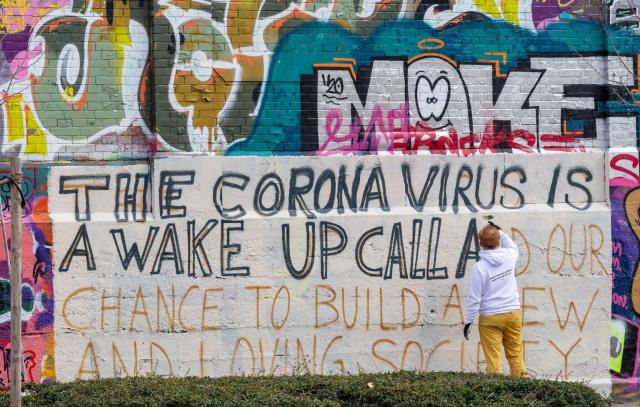
We must be clear: justice does not mean catching Black, Indigenous, and people of color (BIPOC) up to a broken system. Injustice is only a symptom of deeper toxins that hurt us all. Long before COVID-19, communities deeply experienced with displacement, untimely death, social stigma, financial instability, and health disparities have also held wisdom in healing this toxic soil. Justice means supporting their leadership, and doing the work to catch up to them.
1. HEALING THROUGH RESTORATIVE JUSTICE
All life on Earth today, from bacteria to bananas to baboons, share a common ancestor in LUCA, a microbe that lived four billion years ago. Try strolling around town with that perspective, and you’ll see right away that we humans are close kin.
Maybe we manage to fuck each other up not because we’re so different, but rather because we’re family.

THE DISEASE OF US-AND-THEM
In My Grandmother’s Hands, Resmaa Menakem traces the brutalities that Europeans had inflicted upon each others’ bodies long before they landed, still unhealed, on this continent. (If the notion of trauma stored in bodies, and not in brains alone, is new to you, look here or here for more. White men putting down their own dancing is just a small example of how dominant-culture bodies can hold trauma through deep body armoring.)
Unhealed trauma spreads. My mom’s body, for example, carries the memory of Cultural Revolution shamings. Her shoulders bore household responsibility at age twelve. Her eyes have witnessed public mutilation. My dad’s belly remembers starvation. His spine still carries a commitment to leave and make a better life for his family.
My body learned their stories. My gut knows the pinch of not fitting in. My throat carries words gone unheard. My muscles hold a fear of lashing out. Somatic therapy has shown me that behaviors I’m often rewarded for—intellectualizing, refusing to surrender, disguising my needs—have been compensations for unprocessed trauma.
As Menakem writes:
“Unhealed trauma acts like a rock thrown into a pond; it causes ripples that move outward, affecting many other bodies over time. After months or years, unhealed trauma can appear to become part of someone’s personality…. And if it gets transmitted and compounded through multiple families and generations, it can start to look like culture. But it isn’t culture. It’s a traumatic retention that has lost its context over time.”
There is trauma in what we call oppressive power. Hoarding ownership and resources is not the behavior of healed, well-connected bodies. Escaping into intellectual strategy, and attempting to predict and control the unknown, is also a systemic trauma.
We can only heal by choosing what Menakem calls “clean pain” over the continuation of centuries of “dirty pain”:
“Clean pain is pain that mends and can build your capacity for growth. It’s the pain you experience when you know, exactly, what you need to say or do; when you really, really don’t want to say or do it; and when you do it anyway. It’s also the pain you experience when you have no idea what to do; when you’re scared or worried about what might happen; and when you step forward into the unknown anyway, with honesty and vulnerability….
“Dirty pain is the pain of avoidance, blame, and denial. When people respond from their most wounded parts, become cruel or violent, or physically or emotionally run away, they experience dirty pain. They also create more of it for themselves and others.”
From this description, it’s easy to see that dirty pain criminalizes Black and brown bodies, and maps property values to land stolen in genocide. But there’s more.
It’s our own dirty pain that rewards political candidates for crushing their opponents onstage. Our dirty pain mutinies when leaders fail, even when failing is the only way to learn what comes next. Many institutions that can survive in this ocean of dirty pain are so well-defended under duress that, even in a catastrophe, they won’t admit to what they can’t know.
Sadly, many powerful institutions have learned to deliver authority without vulnerability. They are too well-protected to lead us in healing.
HEALING WITH VULNERABILITY
If you’ve grieved a loss, you know that healing is messy. It can feel like going backwards for a long time. It takes time for wisdom and insight to emerge. This is why adrienne maree brown’s Emergent Strategy and Pleasure Activism are such important works. We don’t know exactly how to heal collectively, but we can take it one step at a time, guided by the wisdom of nature’s bodies.
Trauma isn’t the only stone that ripples outward. Here are just a few examples of how healing is also rippling all around us.
The newly opened Restore Oakland building centers the wisdom of restorative belonging and agency, held against generations of unjust criminalization and economic injustice.
Locally in Seattle, Queer the Land is learning from the frequent displacement of queer, trans, and Two-Spirit BIPOC to take an emergent and adaptive approach to cooperative land stewardship—not ownership, they stress, because this is Duwamish land.
The 40+ partners at Black & Tan Hall pay critical attention to maintaining relationships, with white partners caucusing regularly to become better allies. The venue will be based in art and food, two experiences that remind us that our gifts have more value when they’re shared.
Nile’s Edge, a black-owned afro-centric healing arts center in the Central District, opened last year after one of its co-owners took a real estate training program and realized that development finance isn’t rocket science, and in fact often doesn’t make sense (more on that in the next section).
The Chief Seattle Club continues to care for homeless urban Natives during the COVID-19 crisis. As Executive Director Colleen Echohawk writes:
“Native people know what to do in these stressful and extreme situations. We take care of each other. We intentionally look for the most vulnerable in our community. We comfort them and lift them up.”
For more on the perspective and lineage of restorative justice, check out this podcast episode with Kazu Haga and Carlos Saavedra.
2. JUSTICE THROUGH RESTORATIVE ECONOMICS
Today, a few thatched roofs remain as tourist destinations in Iya Valley, Japan.
A newly thatched roof can last 25 years. Back in the day, the roughly 25 families in each hamlet gathered every November to harvest enough thatch for one roof, rotating to keep each roof thatched just in time.
In the 1970s, as more and more young people trickled out to Osaka, this economy of collective care began to fall apart. By the time I moved there in 2005, roofs had long been covered in metal. Nearly 40% of jobs were in public works construction. Truckloads of concrete entered the valley, and truckloads of timber left.

This is the paradox of what we call economic growth. Villagers harvesting thatch for each other doesn’t count towards GDP, but when fractured social bonds force the remaining families to cover their roofs with tin, that gets tallied as growth. Growing enough food to share with neighbors doesn’t show in our economic data, but working a construction job to buy food trucked in from a distribution center does. This numerical accounting is what Charles Eisenstein calls converting the gift into money, and what Just Transition movements such as the Green New Deal call an extractive economy.
THE DISEASE OF NOT-ENOUGH, PART 1: FRACTURE
As a toddler in China, I remember grown-ups telling me how fortunate I was that my parents had left for the US. After having lived through poverty and violent revolution, leaving to pursue opportunity must have been an inevitable choice for them, one I might never know in my own experience.
What I have observed from experience, though, is that uprooting from community seems to make hoarding more appealing. When collective care is not reliable, we suddenly need more than we actually need.
Social fracture can encourage worse than a little hoarding. Research finds that the more anonymous we are, the likelier we are to “defect”, choosing to take advantage, betray, or hoard rather than cooperate. Repeated exposure to this can establish a culture of defection—academic lingo, perhaps, for an extractive economy.
It’s clear how extraction has disproportionately harmed BIPOC communities. Student loan debt, private prisons, displacement, and the health impacts of industrial pollution are only subtler when compared with outright slavery and land theft, yet devastating nonetheless. During this pandemic, predatory buyers are already scouring for land deals.
Nobody truly wins in extraction. For the 76% of Americans who rent our homes from landlords or from banks with a mortgage, it’s often economically impossible to slow down, to take a health break, to use a crisis as an opportunity to reconnect with our wisdom and intuition. Even those with stable jobs don’t necessarily find them fulfilling. Meanwhile, the loneliness epidemic has intensified, hitting 61% of Americans last year before social distancing.
The thing is, most of what we accumulate doesn’t help us in a catastrophe. Properties and financial assets are mostly social constructs, buttressed by legal contracts and insurance policies. Our brains and talents are pretty useless alone. What sustains humanity in a crisis are the relationships that we nurture. Rich relationships are the fertile soil in which shared wealth and ideas can flourish.
THE DISEASE OF NOT-ENOUGH, PART 2: GROUPTHINK
As a landlord, I’m learning how easily our extractive culture can override a more intuitive approach to relationships.
In 2012, I bought a small condo right before the market upswing. I eventually moved in with my partner, but the condo had a piece of my heart.
Not ready to sell it, I decided to rent to people who could no longer afford to live in the neighborhood. I’m transparent about finances with tenants, and they agree on what they can pay. When their situation changes, as with COVID-19, we work it out month by month.
What I’m doing isn’t difficult, financially. I’m more than covering my costs. But being a landlord has tested my values.
Since the 1300s, “value” has meant both price (like the value of a house), and worth (like the value of having a place to live). The equivalent “价值” took on this double meaning in China by the 1700s, and in Japan by the 1800s.
This linguistic invention can be a trap when monetary value and emotional value pull in opposite directions. In a society that built high monetary value on land and labor that was stolen through murder, abuse, and betrayal, conflating the two into a single number can feel like systemic gaslighting.
I think this conflation, at a more subtle level, tricks good people into choosing transaction over relationship when they become landlords. When I go against market wisdom, I can feel doubtful and insecure. But if we can escape the trap of conflating monetary value with emotional value, we can then use the gap between costs and “market value” to value relationships and collective care.
Let me be clear: I’m not living cutting-edge non-extraction yet. I’m still claiming a condo built on stolen land, and I’m still collecting rent. What’s more, systems modeling predicts a ceiling to economic growth despite innovation. Factor in the restoration of over-extracted resources and communities, and many thinkers are joining what major religions and philosophers have said: non-extraction doesn’t only mean below-market returns. It can likely mean 0% or negative returns. I’m only just now, researching for this essay, letting this understanding sink in as a landlord.
My point here is exactly this: it’s difficult for institutional power—in my example here, a property deed and relative fluency in real estate finance—to implement justice well. We can think we’re doing well, but power often puts us too close to the assumptions of a failing system.
This is also why change is unlikely to begin in institutions, and why relationships matter. Working across different experiences of power helps us discern wisdom from groupthink.
HEALING WITH RELATIONSHIP
Fractured social bonds played a role in growing this extractive economy, and healed relationships must be on the path to restoring a just economy. Justice must be co-created from the ground up.
Thunder Valley CDC, a regenerative community in the Pine Ridge Reservation, is about reclaiming traditions. “Lakota Community Wealth Building,” writes Stephanie Gutierrez, “is about loyalty to place and to our people, with ownership held by the community, working with each other as one, considering each person and their ability to be part of the economy, and seeing our economy as circular where everything is connected— consciously recreating sustainable communities.”
To zoom in on how they work, consider the design of their chicken coop. Sometimes designs can look different on paper. After construction had already started, a community member noted that the building was looking a little bland, so they added colorful geometric patterns to it. Unremarkable, right? But in hot real estate markets, schedules and budgets have to be tightly accounted for. There’s rarely room for on-the-fly co-creation, so we sacrifice these simple opportunities for a sense of collective ownership.
Locally in Seattle, the Race & Social Equity Task Force began when community groups from Southeast Seattle, Chinatown-International District, and the Central District joined forces in response to displacement risk. One task force member says they’re standing on the shoulders of the Gang of Four, whose legacy of stewardship includes Daybreak Star Center, the Black Student Union of UW, El Centro de la Raza, and InterIm CDA. Larry Gossett, the surviving member of the Gang of Four, continues to uphold the power of cross-cultural solidarity.
As another example of solidarity, Real Rent Duwamish offers a small way for Seattleites to chip in on our impossible debt to the Duwamish Tribe and its ongoing stewardship of these lands, and to support whatever comes next for the tribe.
The Duwamish River Cleanup Coalition is implementing community-led Superfund cleanup that centers environmental stewardship and economic justice. Their work in building community resilience is based in a belief that collective ownership and decision-making is a critical component of resilient development.
Many organizations in Rainier Beach are working together, cross-generationally and systemically, to implement a neighborhood plan intended to fight displacement through a local food economy.
And a group is forming to adapt the Boston Ujima Project’s model locally, a way for communities to invest in collective planning through equitable investment tranches where high-wealth members contribute loan loss funds so that lower-wealth community members can earn higher (3%) returns at the lowest risk.
For more on restorative economics, see this talk by Nwamaka Agbo.
3. HEALING IN THE TIME OF CORONAVIRUS
I’ve only scratched the surface of all that’s happening in BIPOC communities to build a just future. There are experiments in the arts, housing, small business, health, immigration, environment, and more. If you’re inspired, please reach out. I love learning and connecting people with one another.
There’s a lot to hope for. But to be honest, I think we’ll mostly squander the pain that has brought us this close to systemic reckoning.
Here’s what it would take, instead, to capture this moment of opportunity to build our system back stronger.
WITH OUR HEADS: STEER OUR IMAGINATIONS TOWARD A NEW NORMAL, NOT THE OLD NORMAL.
“Our pre-corona existence was not normal other than we normalized greed, inequity, exhaustion, depletion, extraction, disconnection, confusion, rage, hoarding, hate and lack. We should not long to return my friends. We are being given the opportunity to stitch a new garment. One that fits all of humanity and nature.” —Sonya Renee Taylor
When we get a bad cold, we need to first recover, then carry on. When we get heart disease, we must not carry on, but rather reinvent our lives. Like the virus itself, this pandemic represents both: a crippling illness, made catastrophic when combined with our society’s underlying sickness.
If we speak only of the infection, and not of the heart disease, we will take wrong action. If we speak of racial justice only as righting the data, and not re-imagining the system, we will spend time and money resuscitating a dying system—energy better spent grieving, and imagining the new.
People with what we call privilege are often, in fact, a few generations behind in recognizing the gravity of our collective disease. This is why hierarchies of existing power are generally not the ones to know what to do right now. To capture this moment is to pour back resources to support BIPOC communities who best know the system’s failures and opportunities.
Will we seize this moment to admit to all that we don’t know?
WITH OUR HEARTS: SHARE POWER OUT OF GRATITUDE AND LONGING, NOT OUT OF GUILT OR GENEROSITY.
“How do we then use this crisis as an opportunity to figure out how to deeply invest in those communities, those community leaders, that are really trying to figure out how we create an economic model that is actually rooted in justice, equity, and care?” —Nwamaka Agbo
When racial justice work is motivated by guilt or generosity, it can take a backseat during a crisis. To sustain this work, we must see how connected our hurt is.
I’m typing these words as sunlight streams through leaded glass windows to my desk. Soon I’ll tap a button and the words will stream down a digital river to you, a possible stranger. This home was built on Duwamish land, this computer on a stock-market economy. Many of our gifts are tinged with extraction.
In this complexity, we can hold both gratitude and longing. Let’s long to share a sense of plenty, without extracting from each other and from future generations. Let’s long for security of shelter, without claiming ownership of blood land. Let’s long for belonging, without othering.
It’s long been time to share without charity. To capture this moment is to see that our gifts become our property only if we choose to hoard, and hoarding leaves us longing for a more connected way to be.
Will we seize this moment to open to all that we’d forgotten to value?
WITH OUR HANDS: ACT OUT OF INSIGHT, NOT INSTINCT.
“Fast action without sufficient analysis and reflection will lead to reactions to the immediate rather than long term transformation. We need to move fast slowly.” —Marcia Lee, 2017
As we rapidly respond to the bleeding from COVID-19, let’s also remember that our system has been bleeding for centuries. What must be different this time, if we are to succeed?
When we as individuals listen deeply to the parts of ourselves that are most hurt and unheard, we can become more whole. When we as a system surrender to the communities that have carried the heaviest of our collective pain, and let it be our collective pain, we might also finally find the grief, and then the insight, to heal.
But here’s the twist: that path is neither quick nor straight. Our well-worn systemic traumas have preferred to avoid grief, to refuse letting go and instead to clamp down. Institutions would write strategy papers rather than hold space for trying out the unknown. We’d choose, once again, dirty pain over clean pain.
Will we seize this moment to grieve all that we can’t predict and control?
There’s gold in this experience. Profound hunger can make way for authentic nourishment. Profound loss can make way for authentic connection. Many of our ancestors brought trauma to this continent, trauma that we now carry, and we’re here together to heal this for a reason.
As with any trauma, we have a choice. We can try to force the outcome that fear demands. Or, we can let the trauma break our hearts open and change us in ways we can’t imagine.
The Bramble Project : Joyful and conscientious urban development
Bramble consists of Brian & Bo, two Seattle residents in the real estate industry who met as dewy-eyed grad students at the University of Washington.
We are an inevitable part of growth and change, while remaining conflicted about the negative impacts that can come with it.
Friends we love have moved into formerly low-income communities while existing residents are socioeconomically replaced. Where boring new buildings indifferently puncture existing neighborhood fabric, we want to believe that translates to affordable rents, and yet the market compels a dimmer view.
BRAVE QUESTIONS: RECALCULATING PAY EQUITY
Asking Brave Questions
Perhaps it was a gutsy move. The four of us, a multi-racial team of independent consultants for social justice organizations, working with a local food justice nonprofit on values alignment, including pay equity. We sat in a circle in our client’s empty office to negotiate and decide how we wanted to distribute the contract.
A little more context might help you understand how we found ourselves at this conversation in the first place. Our team consists of Richael, Mala, Julia and Rebecca, the four of us are close friends who socialize with each other’s partners and families, we work together on other contracts and professional endeavors, and we support each other’s other vocational work and radical dreams from writing to workshops.
We, Richael and Mala, the authors of this blog, are queer people of color–Richael is a Black, trans-nonbinary folk healer, strategist, lawyer and former organizer who supports many parts of Black, Indigeous and People of Color (BIPOC) movement community; and Mala is South-Asian queer nonprofit strategist and human resources professional who has been thinking about, creating resources, and furthering racial justice lens, within organizational development work for decades.
Our other two friends and colleagues are white and (upper) middle-class folks (who have differences across religious backgrounds, parents immigration histories, regional identifications, and skill-sets) with backgrounds in prison abolition, Central American solidarity, food justice, resource redistribution, and who lead DC-area spaces for white folks to embody their own racial justice values. We each carry deep personal, political, and vocational commitments to racial justice, and we deeply respect one another’s experience and knowledge.
With our deep experience, comes an acute awareness that, especially with the world of organizational development and diversity, equity and inclusion (DEI) consulting, how much of a gap can exist between what consultants tell organizations to do, but don’t practice themselves. Namely, as our team was supporting a white-led, multi-racial organization with long-time grievances about titles, advancement, and unequal pay among staff of color, we needed to do our own work to ensure that there was pay equity within our own consultant team. Simply put, we didn’t want to be the hypocrites that we critiqued. We were working with a local food justice org to address pay equity, but we were also facing critical choices about directing money that we were earning that would allow us to feel in integrity–or not.
On one hand, we could have used a couple of standard ways to price projects. Based on our proposal, which estimated $150/hour rate for convenience, we could have calculated our estimated hours per month, assigned the hourly rate, and let our consideration end there. Honestly, this is how a lot of consultant work goes, it’s fairly simple and efficient, and doesn’t require a lot of precious energy or critical thinking.
And, on the other hand, we suspected this standard did not allow us to live our walk. Using a standard hourly rate without examining how we got here or what work we each were holding would simply mirror biased norms. At that singular moment, the convergence of our work came toan opportunity to make a bold decision. We called it out: What are the values we want reflected in this distribution?
Our conversation started, informed by our lives, research, and professional work. We named the factors that represented the values important to us:
- “Historical discrimination1.”
- “Net worth – wealth, not income2.” We ended up taking both wealth and income into account because the data shows both matter when looking at disparities in economic opportunities between black and white households.3 .
- “The number of people you support through this income4.”
- “Emotional labor5.”
- “Monthly expenses6,7.”
- And finally, “distributed and anticipated inheritance8,9,10,11.”
At the end of the conversation we were led to a much more complex set of factors than standard hourly billing could account for, and we recognized, at this stage, we needed to generate a tool to help us identify our individual rates. Our goal was to create a distribution structure that actually felt fair for all of our systemic realities which most compensation systems don’t consider (perhaps intentionally). We came up with a collective ranking and applied that to the total compensation.
To do that, we customized a pay equity process and calculator, developed by our human resources expert, Mala, which reflected each factor that we called out, along with a list of other factors based on basic needs (e.g. minimum and maximum acceptable pay rate). We each had to go through the uncommon process of collecting accurate financial data from our households, businesses, partners, and parents. Once we collected these data, and plugged them into the calculator that Mala developed, we began to use it for billing our client, which we refined with feedback and revisions.
What did we discover?
We found that our white team members significantly underestimated their own net worth and their parents’ net worth by millions, while Richael under-estimated their parents’ liabilities, which had dramatically changed in the last few years. Ultimately, we learned that despite our middle class appearances and racial justice commitments, we were the wealth gap statistics.12
We also found that alongside the statistics were: raw emotional reactions, values, tensions based on our beliefs and systemic locations, and open questions about the echo of meanings within these revelations. And yet, in our team reflection, the Black team member said this was the first time they didn’t feel resentful about their compensation within a group. We were getting closer to equity.
This real-life experiment has shaped how we think about our racial equity organization work, too. When we offered our pay equity process and calculator as an example of what was possible to our client’s staff members, we experienced a range of responses, from flowing tears of a Black program staff member (being recognized for the historical and present-day discrimination and bias she faced and had to overcome to just get a seat at the table), to polite defensiveness of a white director.
We knew immediately that we were tapping a racial equity vein not only at this organization, but within the sector and beyond. What could the life blood within our workplaces and movements feel like if we shifted the payscale and internally strengthened protections? Could social justice organizations be the source of a private reparations movement to make workplaces fairer and more effectively make market corrections?
Many people are under the impression that making public our salaries, our wealth, our access to resources is illegal. Far from it—in fact, labor regulations prohibit retaliation against workers from sharing their salaries with one another, which essentially bars policies that prohibit workers from having salary conversations. Still, many businesses have created personnel policies that prevent salary sharing, even though it’s against the law, because our modern work culture standards are set by corporate America. Income secrecy is a divisive cultural tool that fits Friedman’s free market capitalist logic, because it benefits the 1% and other mega-beneficiaries of the corporatized economy. Simply put, we don’t have to abide.
What we need to do is acknowledge that there is shame and hurt in how much racist policies have privileged some and oppressed others. Let’s not blame ourselves in the 99%. We’ve been pitted against each other long enough. But once we know the impact of these policies–including decision-makers who can make different choices, and those for whom decisions have been made and who are able to advocate and organize toward equity–let’s act.
If you have benefited from these policies, voluntarily redistribute. Voluntarily, because we are all stronger for it. When 25%13,14 of us who have been privileged voluntarily redistribute because it’s the right thing to do, the scales of justice and social pressure will turn people to do the right thing (not because of the law). The last vestige of holdouts will be moved when the law no longer hides their privilege or when their children who inherit their wealth, whose values are more justice-centered, can redistribute for them.
1 https://www.ncbi.nlm.nih.gov/pmc/articles/PMC2915460/
2 http://www.lchc.org/wp-content/uploads/02_LCHC_EconJustice.pdf
3 https://www.clevelandfed.org/newsroom-and-events/publications/economic-commentary/2019-economic-commentaries/ec-201903-what-is-behind-the-persistence-of-the-racial-wealth-gap.aspx
4 https://www.pewresearch.org/fact-tank/2019/10/01/the-number-of-people-in-the-average-u-s-household-is-going-up-for-the-first-time-in-over-160-years/
5 https://hbr.org/2010/09/why-is-it-that-we.html
6 https://results.org/wp-content/uploads/2019-RESULTS-US-Poverty-Racial-Wealth-Inequality-Briefing-Packet-Section-1-Final-2.pdf
7 https://s3.amazonaws.com/oxfam-us/www/static/media/files/bp-reward-work-not-wealth-220118-en.pdf
8 https://academic.oup.com/sf/article/96/4/1411/4735110
9 https://www.urban.org/sites/default/files/publication/31206/1001166-wealth-and-economic-mobility.pdf
10 https://equitablegrowth.org/race-and-the-lack-of-intergenerational-economic-mobility-in-the-united-states/
11 https://www.wilsonquarterly.com/stories/why-rich-kids-become-rich-adults-and-poor-kids-become-poor-adults/
12 We see our experiment as a form of inter-personal reparations. Learn more beyond our example. https://wellexaminedlife.com/2016/04/20/the-case-for-inter-personal-reparations/
13 Centola, Damon, et al. Experimental evidence for tipping points in social convention. Science. Jun 08, 2018.
14 Centola, Damon. The 25 Percent Tipping Point for Social Change. Psychology Today. May 28, 2019.
Mala Nagarajan (she/he) is an HR consultant that works with small-to-midsize nonprofits in practicing values-based, people-centered, and movement-oriented human resources management. Mala is a systems thinker and strategist; a racial and disabilities justice advocate; and she thrives on working at the edge of innovation, developing custom client-centered tools like the Pay Scale Equity Process and Calculator(TM). As a member of the RoadMap consulting network, she has coordinated their HR/RJ working group, supported their My Healthy Organization and Our Healthy Alliance online assessments tools, and works with multiracial teams to untangle thorny equity issues embedded in organizational culture, structures, and systems.
Richael Faithful (they/them) is a multidisciplinary folk healer, facilitator, strategist, creative and lawyer. Part of their work supports groups that are developing healing culture and practices with analyses of power and systems. Learn more about Richael at: www.richaelfaithful.com
featured image by Micheile Henderson
DECENTRALIZED NETWORKS AND THE BLACK RADICAL TRADITION – PART 1
FROM COLLECTIVE ORGANIZING TO BUILDING BLACK FUTURES
Every second Thursday of the month, Network Weavers Yasmin Yonis, Kiara Nagel and Marie DeMange host a Community of Practice conversation on Zoom. The skill-building space is available for network weavers who want to create connections and to explore questions central to their roles as facilitators, consultants and movement builders.
In March, the Community of Practice session was dedicated to unearthing what the Black Radical Tradition can teach us about how communities are self-organizing under crisis. Digital Strategist, social entrepreneur, and faith-based organizer Jayme Wooten and former organizer and founding member of Black Lives Matter Global Kei Williams, led the session through a riveting presentation that highlighted how network weaving in movement building creates strong, sustainable, and participatory avenues of community engagement.
In this first installation, I’ll be exploring some of the ideas that resonated with me from Jamye Wooten’s presentation. Join us next week for a second blog post on Kei William’s reflections on the difference between a riot and a rebellion, identifying key moments in a movement and power mapping.
What Moves You to Organize?
One of my key takeaways from the conversation was a question Jamye offered up to the group early on: “How do we move beyond react-ivism to a framework that is more wholesome and holistic?” When I think of activism, I think of forward movement, critical response to urgent community needs. What Jamey’s question opened up for me was an opportunity re-examine the impulse to act. Activism often comes out of a reaction to a perceived injustice. That reaction while visceral and binding, while it galvanizes communities towards action also depends on the viscerality of a trauma response for endurance.
Some good questions to ask in community:
Where in our organizing have we mistaken “react-ivism” for “activism”?
What can we offer as a community in its stead?
Is there room in our reaction to great harm for quietude and spaciousness so that we can recover and organize alongside our comrades?
What Kind of Network Makes a Movement?
A robust and inter-related one.
Another great offering from Jamye was an invitation to look closer at the parallels between movement building and Network Weaving. While people might remember Martin Luther King or Phillip Randolph as leaders of the Civil Rights Movement, what made the movement successful were core members like Ella Baker who helped local leaders in southern communities activate talented and capable young folks to self-organize. [1]
At the core of every network is a relationship, Jamye offers, and crucial to that relationship is trust. We often overlook the importance of relationship and trust building in the health and longevity of networks in an effort to make sure more work gets done, and yet, a sustained, years-long trust-building effort is the only way Baker’s could have galvanized as large and loose a coalition throughout the South as she did.
To that end, it’s important to know what each network needs to be able to organize resources to ensure its success. For example, an Action Network is just a collection or clustering of people who are interested in executing similar tasks: fundraising for an event or creating a mutual aid pod. What an Action Network needs to thrive might be different from a Support Network which is likely the comms and evaluations core of any successful self-organizing pod. That being said, a good Action Network is nothing without a robust Support Network, a collection of folks willing to build out systems and stay on top of resources. And a robust Support Network relies on the trust building, collaboration and thoughtful strategies that come out of relationships in intentional networks. Networks are not so much separate pods with a shared core as they are a spider
Are you using a Centralized vs. Decentralized Models?
According to Jamye’s research, successful Networks are not so much spidery pods with a powerful core as they are a starfish with deeply interconnected and communicative limbs. Thinking of the limbs of the Starfish as replicable and healthy parts of a network allow us to see the importance of each part: Circles, The Catalyst, Ideology, Pre-existing Network, The Champion. A healthy network needs all of these parts to be aligned in vision, communication, interlocking values and principles so that they can adequately organize for power.
A great example of such a model in practice are the hashtag based campaigns such as #BMoreUnited in response to the spotlight on Baltimore in the aftermath of Freddie Grey’s shooting at the hands of Baltimore Police. What emerged was a coalition of citizens who operated as a network without any real leadership structure to demand justice and accountability for police shootings in their community. They were able to do so by prioritizing participatory democracy and building out a skills bank to utilize the human and financial resources that came pouring in after the media spotlight.
From Collective Organizing to Building Black Futures
The last and arguably coolest lessons from the session is that it’s possible to use digital spaces to ethically organize on behalf of communities in ways that are participatory and rigorously innovative. Take CLLCTIVLY “a place-based social change ecosystem using an asset-based framework to focus on racial equity, narrative change, and social connectedness.” The most remarkable aspects of CLLCTIVLY: its asset map/directory which aims to amplify and connect community members with multimedia projects, a strategic partnership/marketplace, a social impact institute, and a rotating Black Futures Micro-Grant . Using the seven principles of Kwanza, CLLCTIVELY aims to put old money in service of new values. COLLECTIVELY- create ecosystem to foster collaboration.
Resources:
- Old Money, New Money 2019: A Community of Practice in Three Parts
- Ella Baker and the Black Freedom Movement: A Radical Democratic Vision by Barbara Ransby
[1]https://time.com/4633460/mlk-day-ella-baker/
Watch the video of the session by downloading the free resource HERE.
About the author:
Sadia Hassan is a facilitator and network weaver who has enjoyed helping organizations use a human-centered design approach to think through inclusive, equitable, and participatory processes for capacity building.
She is especially adept at facilitating conversations around race, power, and sexual violence using storytelling practice as a means of community engagement and strategy building.
She is an MFA candidate in Poetry at the University of Mississippi and has a Bachelor’s degree in African/African-American Studies from Dartmouth College.
WHO AM I
Adhel Arop is a two time award winning filmmaker from Vancouver, Canada. She has been a poet since the age of eight, writing poems for conferences and school assemblies. She has always gravitated to poetry as a way to express and explore emotions.
Adhel’s documentary “Who am I?” weaves together her experience settling into Canada as a refugee with her family and her mother’s experience as a child soldier in South Sudan. We are excited to share two of Adhel’s poems, Sudan’s Echo and SPLA Song and a short interview with the artist about her influences and hope for her work.
PART I.
(This is the translated song that my mother and I sing at the end of the documentary.)
Sudan’s Echo
By: Adhel Arop
The sky weeps
my country screams
I watch in agony
the eyes of the people I love dearly tell stories of sadness
they are children
who have become broken adults
Now their children inherit that hurt
trauma becomes Sudan’s
greatest
Legacy
I remember the music that played in the background of my childhood
my mother seeking solace in the things that destroyed her
I would look into her eyes
Seeing the reflection of the skies
she once looks up to
her face
crying out as muffled voices screeches from the radio
eyes fading into an expression I could not understand.
We were strangers
she was strength
yet in her power I saw weakness
every day
I heard these muffled voices
Hopeful screams
they were my mother’s sense of home
she gave up her childhood for her country
within that exchange
her eyes stopped forming tears
while her soul drowned in agony
What has become of the person she wished to be?
I remember hearing the muffled voice of men
seeping out of the radio
the sounds lingered in the air
longer then the silent stares we exchange
I would whisper
“are you ok?”
She looked at me
our hearts exchanged words our mouths could not
never understood why these cassettes meant so much to her
How was I to know she had been a child soldier
These muffled voices of men screaming
were the songs that once kept her alive
at a time she wasn’t sure if she wanted live
I weep for her
because I know
she has lost her ability to shed tears for
herself….
SPLA War Song
South Sudan wo yay
SPLA wo yay
Karyom wo yay
Madeer dan wa
Leaders of Wau
Madeer Wau (region in Sudan)
Leaders of Wau
Meedeer dan Wau
Leaders of Wau
Ran Wau
People of Wau
Madder dan Malakal wandeed ku juba
Leaders of Malakal l And Juba
Loy by ka de ken pel a by
What are we doing to our country
bogou thiem chin te de e ya chol
You’ve left our country in shambles and have nowhere to call home
Maye maye maye
My god, My god
Maye maye maye
My god, My god
Meerder yat kwon acha keg pwol
You’ve homes, your province
Ke dom ke lwoy che by la tweng
and taken on jobs that wont help the country develop
E ke reg a de
What a terrible thing
Wed kwan Sudan
Children of Sudan
Howne a thiow thar a che la mang
That sounds of gunfire is going
Keg jej a Nemir
off as the soldier fight against us
Sonke sonke A mane a Nemir jol ke moge a choge
Nemir will hate it but we will take our country back
Bunge Kwan yin kej waii kuwa teng
Governor Haven’t you seen us we are dying
pinge by Sudan a riag bange da
Our Country is in shambles
pinge bwog liew
We can’t move forward
kowo che jur Maraleen Jok Kwa nhin win a Bol
we can’t take back our country when most of us have died
The arabs have chased us out
Kwa Nhin son of Bol
Name of Leader
Maye maye
my God, My Gd
Leke John Karang Leke John Karang bwog loy ke de Na ye piang da
Tell John Karang how will we take back our land,
Bunge Kwa nin kej wei kwa teng binge by Sudan a riag bange da
Governor Kwanin haven’t you seen us, haven’t you seen our country we are dying
pinge bwog liew kowo che jur
How will we take back our country when many of us have been killed by soldiers
Maraleen Jok Kwa nhin win a Bol
Tell us
Maya maya maye
My God, My god
Leke John Karang bwog loy ke de Na ye piang da
Tell John Garang what will we do to get back our land?
Nhwen a thow bwog rod nyia wei
When it comes our land We will die for it
Ghwen a thow wed kwan e two
You will only take our country over our dead bodies
Gwen a thow wed kwan Janub
We choose death, our life is our country
Biange john garang ina choge mouthe mathu biange da
John Ganag we salute you,
Ka pae ka dianhg owa nug neen jwij
its been 3 month we’ve been walk and we are tired
PART II.
Interview
Sadia Hassan: Adhel, I just watched your moving documentary. It is so full of love for your mother and you all’s shared language and common history. I grew up in Clarkston, GA where my family and I were resettled as refugees in the mid 90’s. I had lots of friends from Sudan and Gambia. Your documentary reminded me so much of what it was like (and honestly, still like) to grow in that middling place of multiple identities.
What of your work in the world inspired these poems?
Adhel Arop: My documentary “Who Am I” is the film to my poetry, I wrote these poems while creating my first film, I used them to hire collaborators, the set the tone for all my present work, I learned to translate Dinka (my native tongue) I got a deeper for my language, opening me up to a whole new world of stories, the history of my country South Sudan and my mother and aunts apart of the liberation movement, this feminine power in the face of war gave me courage to explore my mothers trauma.
SH: What do you hope readers will walk away with?
AA: I hope they hear the hope that echoes through time, the songs that my mother sang as a child soldier are now interweaved into my artistic platform raising my success as a filmmaker while honouring my roots. These types of stories are not unique. War and displacement have affected many countries and their development is intergenerational trauma something we all can connect to one way or another.
SH: In the age of climate change, what do you feel the world owes Sudan?
AA: I wont say the world owes Sudan anything, war owes Sudan peace. Centuries of fighting with the division between the majority Islamic North and a Christian South, one that led to two civil wars, leading to a referendum in 2009; these issues birthed a new nation called South Sudan, the newest country to join the UN, A country that has been plagued by civil war and continues the unrest after the referendum. These two nations, Sudan and South Sudan, are going to be heavily affected by the climate change.
The South is still on a first wave of industrial revolutions. I hope the world will aid Sudan and South Sudan in exploring solar energy for infrastructure building. As a human rights activist, I believe that at-risk countries need our support. They are behind on technology because of on-going war and with climate change and their effects will take have some concerning repercussions for at risk countries and Sub-Saharan Africa, the world should aid Sudan & South Sudan on their Sustainable Development Goals and infrastructure building through the use sustainable options such as Solar Energy, I hope the countries will be offered a voice and connected in the fight for Climate change as leaders.
SH: Can you tell us a little about a community practice you have that has inspired your art-making?
AA: I have been a volunteer mediation instructor on the downtown eastside, Karma teachers is a non-profit studio and teacher training school. Volunteering for the past eight months has provided an inside look at what goes into running a yoga studio the community that gathers. We all volunteer our time and help one another, It’s inspired my art to be involved in a community, my art has grown significantly through the developing love of all the communities I’ve been a part of. My art is to raise people’s voices that were once silenced through multiple digital mediums.
SH: What was your experience translating Dinka with your mom and what do you think the world of translation can do for us in terms of empathy and connecting with each other?
AA: Translating was definitely difficult when I originally took on the task, I translated over 40,000 words from Dinka to English. I would call my mom and ask her to re-pronounce certain words or songs. Dinka has several accents and I spoke/understood one certain accent, but after hours and hours of listening to different people speaking the language, I managed to have an easier time. I think that understanding breeds empathy and connection because it allows us the ability to understand each other. Learning Dinka more intensely has made me feel more connected to my mother. It gave us something to do together. People from my community have really been happy with my interest in exploring the culture and language, providing me with opportunities within the community to learn to speak and translate the language.
SH: Sudan’s Echo is entirely in English while SPLA Song almost feels like a call and response between English and Dinka. What feelings were you trying to evoke with each poem? Are they in conversation with each other?
AA: In Sudan’s Echo the scene is set in my childhood, on any given day you would find my mother cooking and drifting off to the sounds that poured out of the radio I wasn’t aware at the time but the songs she listened to were songs from her time in the SPLA. This particular song is actually my mother’s favorite song so I decided to use it for the foundation of work pertaining to the SPLA and child soldiers. My mother and her friends from the war spend hours on the phone singing to one another in conferences even until the current day, it always sounded like muffled voices until I could understand the language in more detail as an adult. So creating this piece of poetry alongside translated war songs are my attempt to provide what it feels like to have a traumatized mother with a secret past, you always knew there was something off but it took years to uncover the mystery. It has given me so much healing to explore these stories of my past, finding creative ways to translate my experience has been the most exciting part for me. These two pieces of work are in conversation because the SPLA Song when performed join together, I sing the songs and recite the poetry when I have speaking engagements I will perform the works together.
DEEPER THAN HAIR DISCRIMINATION: A MOVEMENT TO ADDRESS AND DISMANTLE SYSTEMIC RACISM
When I graduated from Columbia University, I was informed in a professional development workshop at a national conference that my hair should not distract from my excellent credentials. I did not understand how hair that grew naturally out of my scalp could be labelled as a source of barriers. The styles that were mentioned as socially acceptable for professional upward mobility were straight hairstyles that did not reflect the texture of my natural hair.
As co-founder of the CROWN Campaign, a movement founded to end discrimination and injustice of all forms including hair discrimination. I have had lived experiences of hair discrimination which fueled my passion to address systems transformation through a lens that is informed by my interdisciplinary background. CROWN campaign is an interdisciplinary team and growing village of grassroots advocates in academia, business, policy, journalism, research, health, law, the arts, and community who have lived experiences of hair discrimination, know of those impacted by hair discrimination, and have been engaging voices from around the country and globe on experiences with hair discrimination. The CROWN campaign is a labor of love.
1. A few things to know about the CROWN Campaign
The CROWN Campaign was founded to end discrimination and injustice including hair discrimination locally and globally and we do this using a “it takes a village approach”. The CROWN campaign village has shared expertise in research, law, creative arts, journalism, business, virtual and in-person activism and many other areas.
2. My Hair, My Crown, My Freedom
I have recently written and directed a short animation film, entitled “My Hair, My Crown, My Freedom” and brief discussion guide to engage local and global populations on what a diverse, equitable and inclusive world can look like.
The short animation film can be found HERE
3. Journey of the CROWN Campaign
The journey for the CROWN campaign began in February 2019, when the New York City mandate against hair discrimination was announced. I was sitting on the couch as I read the news about the hair ban. Reading the New York City hair ban validated and emboldened my voice and experiences in terms of the discrimination that I faced and I reached out to individuals in my network through a mass chain of emails about tackling this issue from an interdisciplinary lens including reaching out to Shemekka Ebony who would become a co-founder in this movement. It started with many emails. In the initial stages, there were some who said “it is just hair” and the black community has more pressing issues to address in terms of systemic racism.
Those of us who have had lived experiences knew that it is deeper than just hair in terms of impacting educational attainment, employment opportunities, upward mobility, health and well-being. This further emoboldened me to share my experiences and reach out in my networks to get an interdisciplinary team together to provide evidence on the harmful impacts of hair discrimination from a big picture lens as being much deeper than hair.
The individuals I initially engaged then referred other individuals who came to form the core crown campaign team and subsequently the growing village who have contributed their expertise. For example, Shemekka Ebony, co-founder, has been instrumental in developing the network of activist through social media advocacy. Dr. Manka Nkimbeng joined the team bringing in the research lens of the health impacts of discrimination from her dissertation research. Both Shemekka Ebony and I mentored Dr. Manka Nkimbeng as part of the Robert Wood Johnson Health Policy Research Program where she expressed an interest in crown campaign’s efforts and wanted to focus her enhanced learning project on the health impacts of hair discrimination. Crystal M Richardson and JB Afoh Manin have focused on the legal and policy angles with JB’s focus being on men and hair discrimination.
4. It’s Deeper than Hair – Black Hair History and perpetuation of systemic racism today
The CROWN Campaign will be launching a global series called deeper than hair to further contextualize the health, economic, social justice, and well being impacts of discrimination. In the black community, hair and hairstyles have strong historical, political, cultural, social, and familial significance in terms of identity. Such hairstyles include afros, braids, bantu knots, locs, African thread styles, twists, fades, and leaving hair in various forms of its natural state.
Unfortunately, individuals have been discriminated against on the basis of the expression of this cultural identity and practice of natural hair/hairstyles. This has resulted in a number of inequities in activities of daily living such as lack of employment opportunities, discrimination in the workplace, discrimination in school settings, job loss, microaggressions and much more. In a number of case studies, individuals have been told to conform to the dominant culture for assimilation and upward mobility further promoting racist stereotypes. There is strong research evidence on the adverse effects of different forms of discrimination on health, social determinants of health, and equity.
Understanding the historical context of black hair helps us to understand how systemic racism has been propagated in policies. Dr. Patricia O’Brien Richardson, one of the CROWN Campaign collaborators in academia provides an in-depth historical context based on her research as follows: “Black people have a rich history with hair beginning in Africa. In the earliest African civilizations, hair was considered a cultural marker and used to indicate age, marital status, wealth, rank, and tribal affiliation. In American society, hair has historically been used as a tool of systemic violence against black men and women who have been socially penalized and stigmatized for their hair. During colonial period and later in the Jim Crow era came to be described as wild, unkempt, messy, sweaty, knotty, dirty, and nappy. Wild, messy hair was often equated with wild behavior, signifying insanity.”
We see similar words, “unkempt” “wild” “messy” “nappy” “unprofessional” perpetuating structuralized and systemic racism in workplace and school grooming policies today.
5. Impact of the CROWN Campaign
Since the vision and inception of CROWN Campaign in February 2019, CROWN Campaign has provided advocacy and presentations around the country, and has a growing list of partners in advocacy, including partnering with Dr. Patricia O’Brien Richardson who envisioned the first ever historic inaugural CROWN Conference in New Jersey. An attendee at this conference, Karla Arroyo, a journalism student, has become our first inaugural CROWN Campaign fellow. She will be completing her capstone as part of the fellowship with a focus on community organizing and uplifting the stories and voices of those impacted. I, along with the CROWN campaign team and crown campaign village, will be mentoring her from an interdisciplinary framework of co-design.
Due to a request from policy makers for research on hair discrimination, CROWN campaign has created a readily accessible starter library in the resource section for evidenced based research on the impacts of hair discrimination because we recognize that it is deeper than hair. We all have lived experiences and have interacted with individuals and communities who have been severely impacted from hair discrimination in terms physically, socially, mentally.
The CROWN campaign team and village contributes expertise in the creative arts including photography, film, scholarly research, journalism, written and spoken word, in person advocacy and educational outreach, as well as social media advocacy. CROWN campaign has developed tools and resources and also curated tools and resources from the growing village that can be found here. In the village, we want everyone to feel empowered to lift their voice and expertise in various forms to dismantle racism. We have seen this manifest beautifully in the village through research, advocacy, poetry, film photography, legal, policy and many other areas. The tools and resources can be found HERE.
6. CROWN Campaign Advocacy Case
CROWN Campaign has been in advocacy for cases of discrimination including most recently two young boys who were deprived of an education within the Tatum Independent School District for natural hair. CROWN Campaign provided expert witness testimony and an advocacy letter.
It truly takes a village to dismantle racism and CROWN campaign with the help of the growing village is taking an interdisciplinary approach to tackle and dismantle racism using a multi-prong approach.
The CROWN Campaign is a team of volunteer advocates that are self-funding this important work across the United States and beyond. We cannot do it alone. We need your help!We are a growing Interdisciplinary collective of community members, professionals, and experts with lived experience that are championing the advocacy and education of the impacts of hair discrimination to natural hair citizens. We need support funding the travels, events, expenses, and labors of love from our team. Donations from those that believe in this work and can identify with the need for change, please donate and share. http://www.crowncampaign.com/donate.html
Learn more about the CROWN Campaign at www.crowncampaign.com
FB IG & Twitter @crowncampaign
Dr. Bernice B. Rumala is Co-Founder for the CROWN Campaign , an effort aimed at ending discrimination and injustice locally and globally, including hair discrimination. With more than 15 years of experience, Dr. Rumala earned a PhD and three masters degrees from Columbia University and served as a Fogarty-Fulbright and Harvard Fellow. She has contributed her interdisciplinary expertise as a change agent in the public, private, academic and international sectors. As a former senior consultant for the United Nations, her areas of interest and expertise include equity, health equity, social justice, diversity, inclusion, discrimination, interdisciplinary-programming, advocacy, community engagement, and systems transformation.
Dr. Rumala has lived experience of the ongoing challenges of severe inequities and the detrimental impacts to individuals and communities, specifically vulnerable communities and communities of color. This is unacceptable to her and should not be the norm. Dr. Rumala also considers herself a global citizen based on international experiences in more than thirty countries. She has had global experiences in stable regions as well as regions impacted by war, conflict, and instability, including Iraq where she worked for the United Nations. She continues to contribute her expertise as a global and local leader, consultant, and, is the Founding CEO of the Change Agent Firm.
